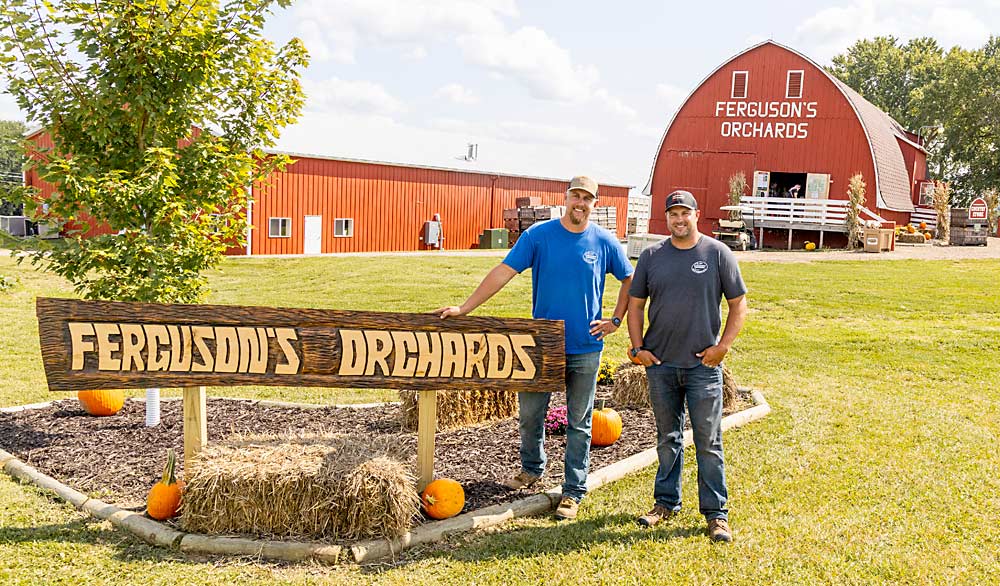
In 2001, the Ferguson family moved from Southern California to Western Wisconsin to make a go at growing apples. They had no experience orcharding, but 20 years later they’re the largest apple grower in the Upper Mississippi River corridor — and between the Rocky Mountains and Lake Michigan, as far as they can tell.
The region is not a large player in the U.S. apple industry. With a width of about 100 miles on each side of the Mississippi River, running from Western Wisconsin and Eastern Minnesota down into Northeast Iowa, it’s dotted with small apple orchards and farm markets, most with a focus on direct sales. Some larger commercial growers exist, but the region rarely produces more than 500,000 or 600,000 bushels of fresh wholesale apples per year, said Fred Wescott, a grower and packer based in Southeast Minnesota.
That’s not a lot compared to nearby Michigan or New York, let alone the Pacific Northwest, but the region’s retailers increasingly are seeking local apples. To tap that sales potential, the Upper Mississippi needs more acres of modern, high-density apples. To sustain those plantings long term and expand them, the region needs to attract the kind of supply companies that serve the larger apple enclaves. And to even think about building up an entire industry almost singlehandedly, the region needs growers with an unusual level of ambition.
Enter the Fergusons.
For the past two decades, Tom and Deb Ferguson, eventually joined by their sons, Andy and Joe, have been buying orchards and farm markets along both sides of the Mississippi River, adding apple acres and agritourism attractions along the way. They now grow about 350 acres of apples, with plans to add still more.
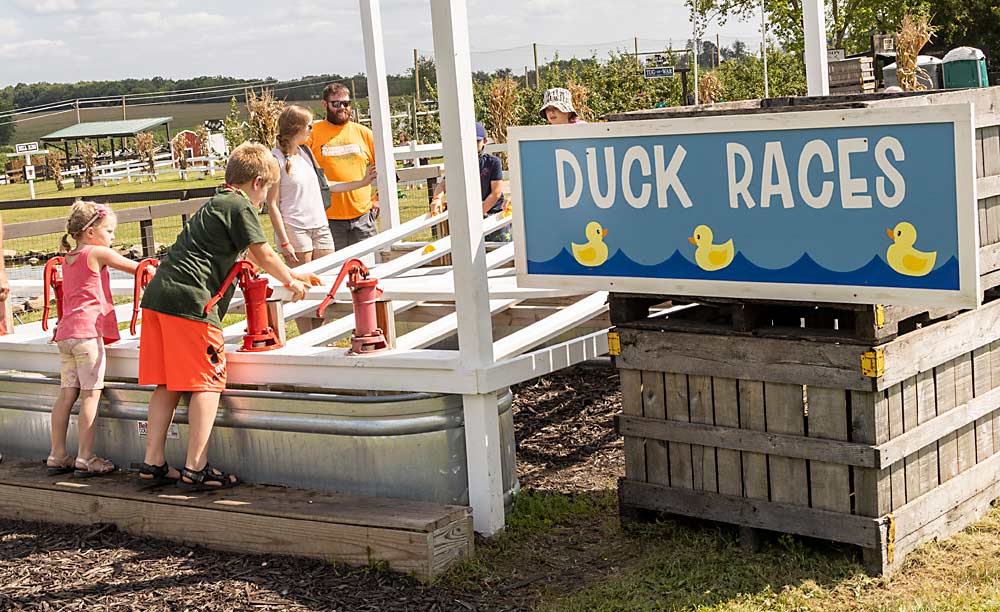
“We want this to be a growing region that other businesses want to come to,” Joe Ferguson said. “If we don’t have that kind of farming around here, they’re not going to want to set up shop.”
Or, as his brother, Andy, put it: “No one’s as crazy as us.”
Growing fast
Tom and Deb bought their first orchard in Galesville, Wisconsin, in 2001. They were college shopping nearby with their daughter, Jill, when Deb saw a flyer in a hotel lobby that said, “Orchard for Sale.” Tom, who did not grow up on a farm but knew he wanted to be a farmer at 5 years old, decided this was the time.
So, the Fergusons moved their family all the way from California to Wisconsin. The decision wasn’t quite as monumental as it appeared, at least not to Tom. He grew up in Minneapolis, so he was familiar with the area. His three children were used to moving around, following his engineering job. And as for making a living growing fruit when he had no experience doing so?
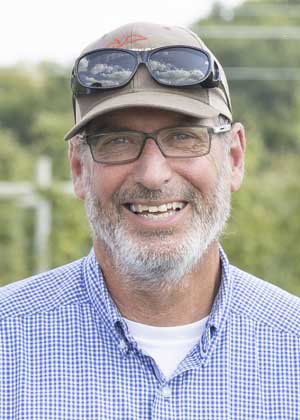
“I wasn’t really worried,” he said. “I have the blessing or the curse of eternal farmer optimism: that next year will always be better.”
Tom and Deb quickly learned the ins and outs of horticulture and farm marketing, with lots of help from the orchard’s previous owners and other local growers.
“When you develop a passion about something, you can learn really fast,” he said.
When Andy and Joe were ready to join the business, the family developed a long-term, expansive plan including both the commercial apple growing and agritourism branches. They’ve stuck to that plan over the years, investing millions of dollars in the process, Tom said.
A big part of the plan involved buying new orchards and farm markets if they came up for sale. They now own two agritourism operations in Wisconsin, as well as a retail store in Minnesota. They also own three Wisconsin orchards.
They made their biggest purchase, at least on the commercial growing side, in 2018, when they bought Pepin Heights Orchards in Lake City, Minnesota.
Joe said they’ve added nearly 80,000 trees to the Lake City orchard since they bought it, mostly red-strain Honeycrisp. The new plantings have all the hallmarks of modern commercial orchards: Geneva rootstocks, 3- by 12-foot spacings, weed-free strips, irrigation lines, reflective fabric, wire and bamboo trellises.
The Lake City orchards sit on a bluff overlooking the Mississippi River, which gets a lot of wind. Fruit-damaging hail occurs more frequently than it used to. Their next big investment will put 50 to 100 acres under hail netting within five years, Joe said.
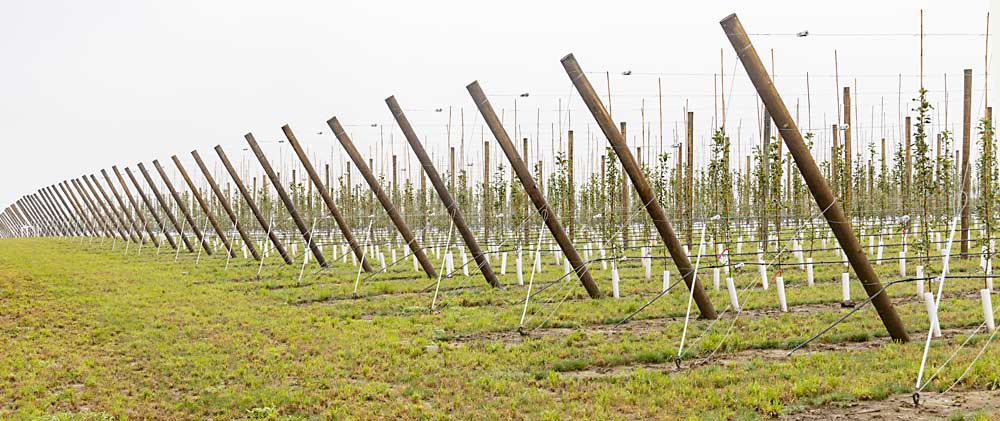
Besides Honeycrisp, other main varieties include Minneiska (marketed as SweeTango), Pazazz and First Kiss.
“We want to be in full production as fast as we can,” Joe said. “We’ve planted pretty consistently and heavily, especially in this orchard. But really, for the last 10 years we’ve been trying to plant as much as we can, as big as we can, to make sure in four years, when we’re in full production, we’re all set.”
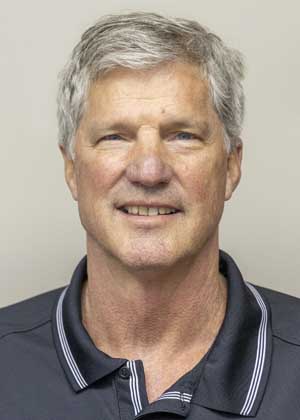
All of those extra apples need to be packed, of course, which makes their partnership with Fred Wescott crucial. Wescott packs their apples at his facility in Elgin, Minnesota, under his Mississippi Valley Fruit Co. label. He said the Fergusons have become his largest supplier in the past few years.
“They’re serious growers,” Wescott said. “The things they do, and we do, have to be in sync as far as packing, storage, marketing and varietal selection.”
Mississippi Valley Fruit Co. packs nearly two-thirds of the Upper Mississippi’s fresh apple crop (the 2021 crop, hit by erratic weather, was a fraction of the normal size). In recent years, Wescott has expanded and upgraded his packing line and built more controlled-atmosphere storage rooms to accommodate a larger crop and lengthen the sales window, he said.
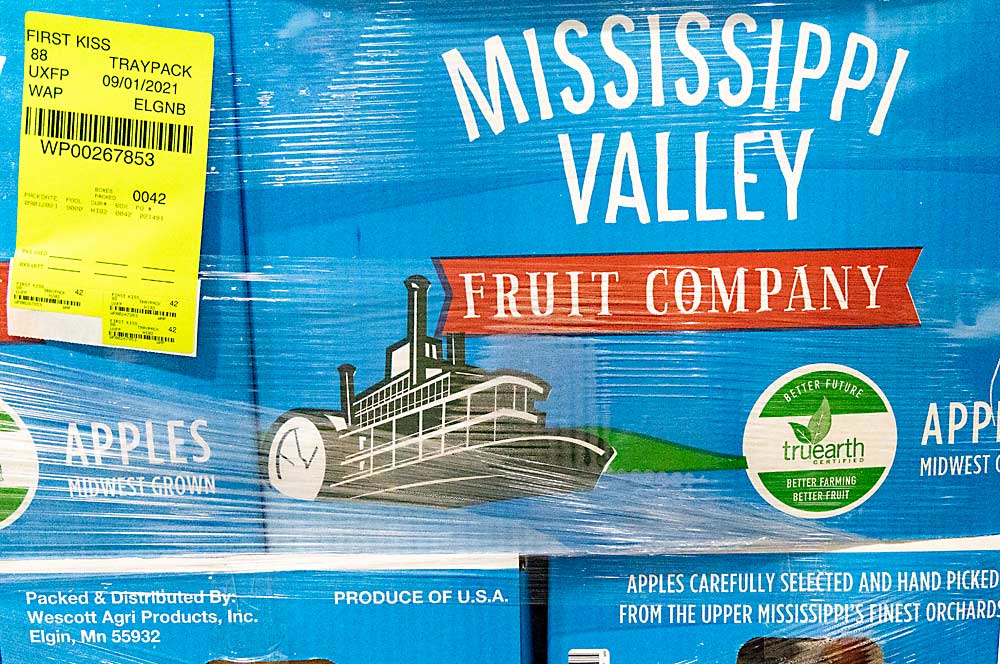
During harvest, the Fergusons often run six semitrucks a day to Wescott’s packing facility. Their harvest operation is very mobile, with buses, bin haulers, trailers and tractors moving to an orchard, staying two or three days, then moving to the next, Joe said.
They’ve perfected the routine over the past decade, starting in the south and gradually moving north. The different orchard locations have the benefit of different harvest timings, which gives them more logistical flexibility, said orchard manager Thomas Bernard.
Their H-2A workers have the routine down, too, and are faster and more efficient every year. They now hire up to 62 H-2A workers during harvest, Joe said, and plan to hire up to 100 once a large Royal Red Honeycrisp planting starts producing.
Joe, 32, and Andy, 35, have gradually taken on larger roles in the business and are now co-owners. Andy manages the agritourism side, while Joe manages the commercial orchards. Tom, 64, describes himself as “semi-retired” these days, content to watch his sons take the lead — and perhaps, one day, his grandchildren.
“I’m just really lucky to have these guys,” Tom said. “This has grown beyond our wildest dreams.”
—by Matt Milkovich

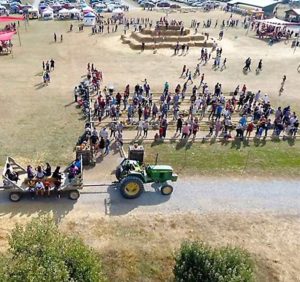





Leave A Comment